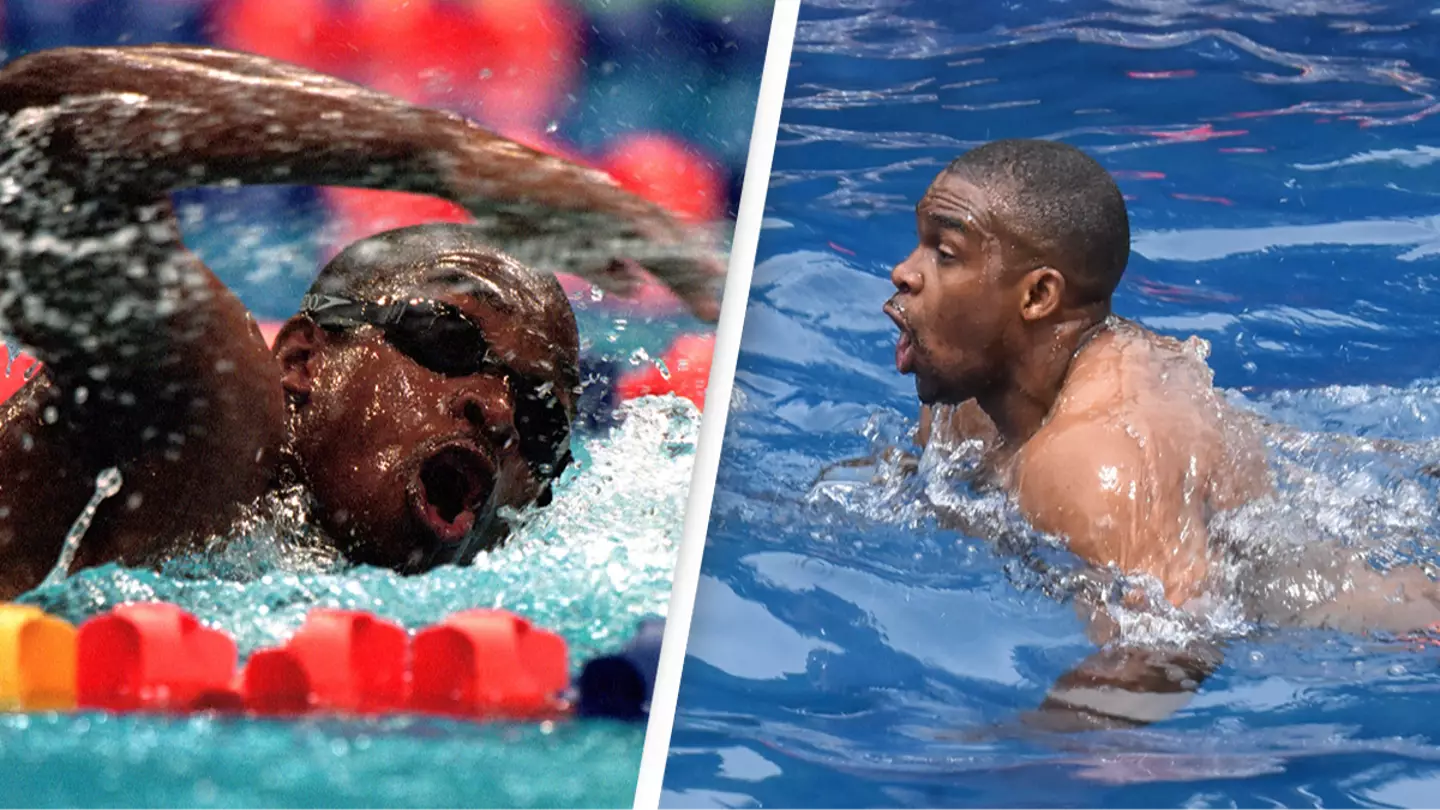
In the run up to the 2000 Olympic games in Sydney, Equatorial Guinea put a call out for athletes to try out for its squad.
Among those who responded was the 22-year-old Eric Moussambani, who turned up for the trials for the swimming team.
Eric the Eel’s swim at the 2000 Sydney Olympics
Mark Hamill coaches Cameron Monaghan in Star Wars Jedi: Survivor trailer
I say ‘among those’, but in the end Eric made the team by default because he was the only man to actually turn up for the swimming trials alongside Paula Barila Bolopa, who competed in the women’s category.
There was one small problem though – Eric didn’t know how to swim properly.
Not only that, but Equatorial Guinea didn’t have the facilities for him to train.
The athlete recalled how he became an unlikely Olympic swimmer, saying: “I started swimming when I left school. We didn’t have a swimming pool.”
In the end, the budding olympian had to train in a small hotel pool around 13 metres long.
As for coaches? Forget about it, Eric trained by himself in the pool.
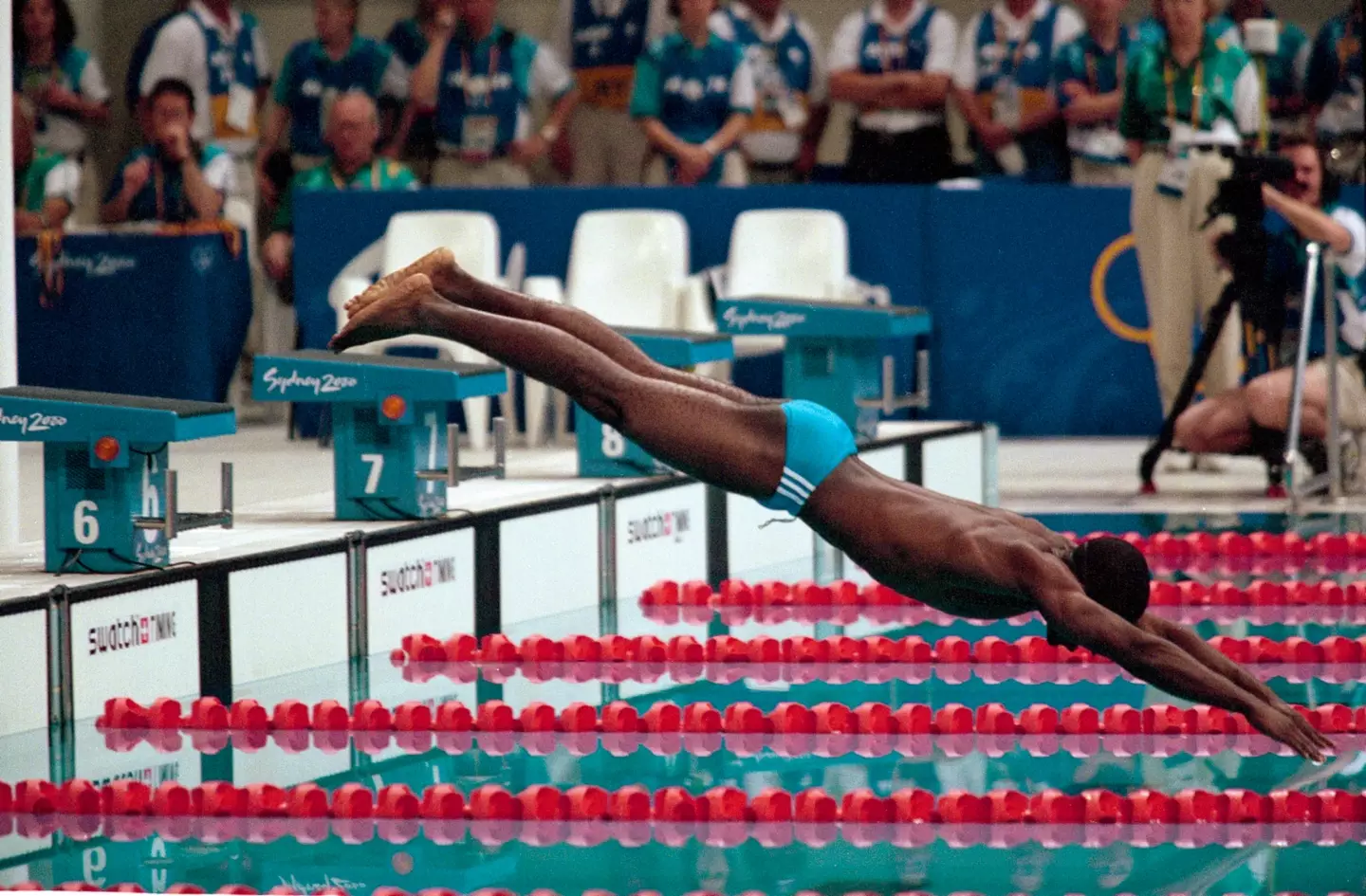
Eric sets off on his swim. (Simon Bruty /Sports Illustrated via Getty Images)
He said: “I trained on my own and I had no swimming experience. The pool was only available from 5am to 6am and I was only able to train for three hours a week.”
Luckily, he was able to supplement this with swimming in rivers and the sea, assisted by some fishermen.
He recalled. “The fishermen would tell me how to use my legs and how to swim. There was nothing professional about it at all.”
So Eric turned up to the Sydney Olympics in 2000 having never even swam in a full-sized Olympic pool, which are 50 metres long.
He said: “I was scared by the sight of the first pool I’d be racing in.”
The swimmer also had to borrow a pair of trunks, given to him by the South African coach, as he had turned up in swimming shorts.
In a remarkable twist, the two other athletes in his heat were disqualified, meaning that Eric only had to complete the 100 metre swim to win his heat.
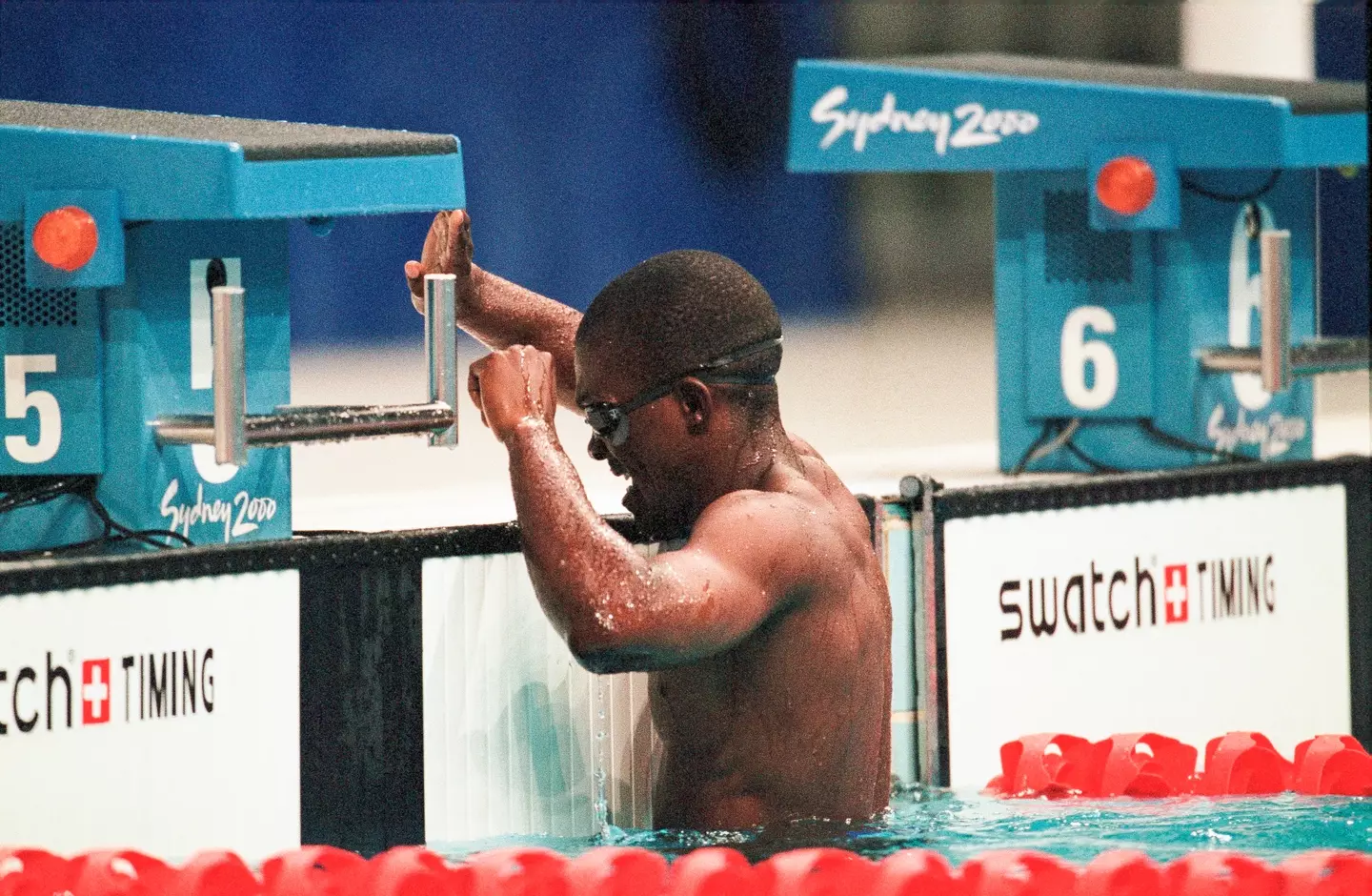
Eric celebrates after his 100m race. (Simon Bruty/Anychance/Getty Images)
His subsequent race was cheered on by the surrounding crowd.
On his second length it looked like he might not make it and even had to grab the lane rope to avoid going under the water, but amid the cheers of spectators he finished the race.
He said: “I knew that the whole world was watching me – my family, my country, my mother, my sister and my friends. That’s why I was telling myself that I had to keep going, that I had to finish, even if I was alone in the pool. I wasn’t worried about the time. All I wanted to do was finish.”
In the end he clocked in a time of 1:52, but was not deterred.
After Sydney, Eric continued training and eventually got a personal best of 57 seconds – fast enough to have won him the gold in Helsinki in 1952.
Swimmer Jing Quah shows food from Olympic Village
Eric went on to become the coach for the Equatorial Guinea swimming team, and since his remarkable appearance the country has built two full sized Olympic swimming pools.
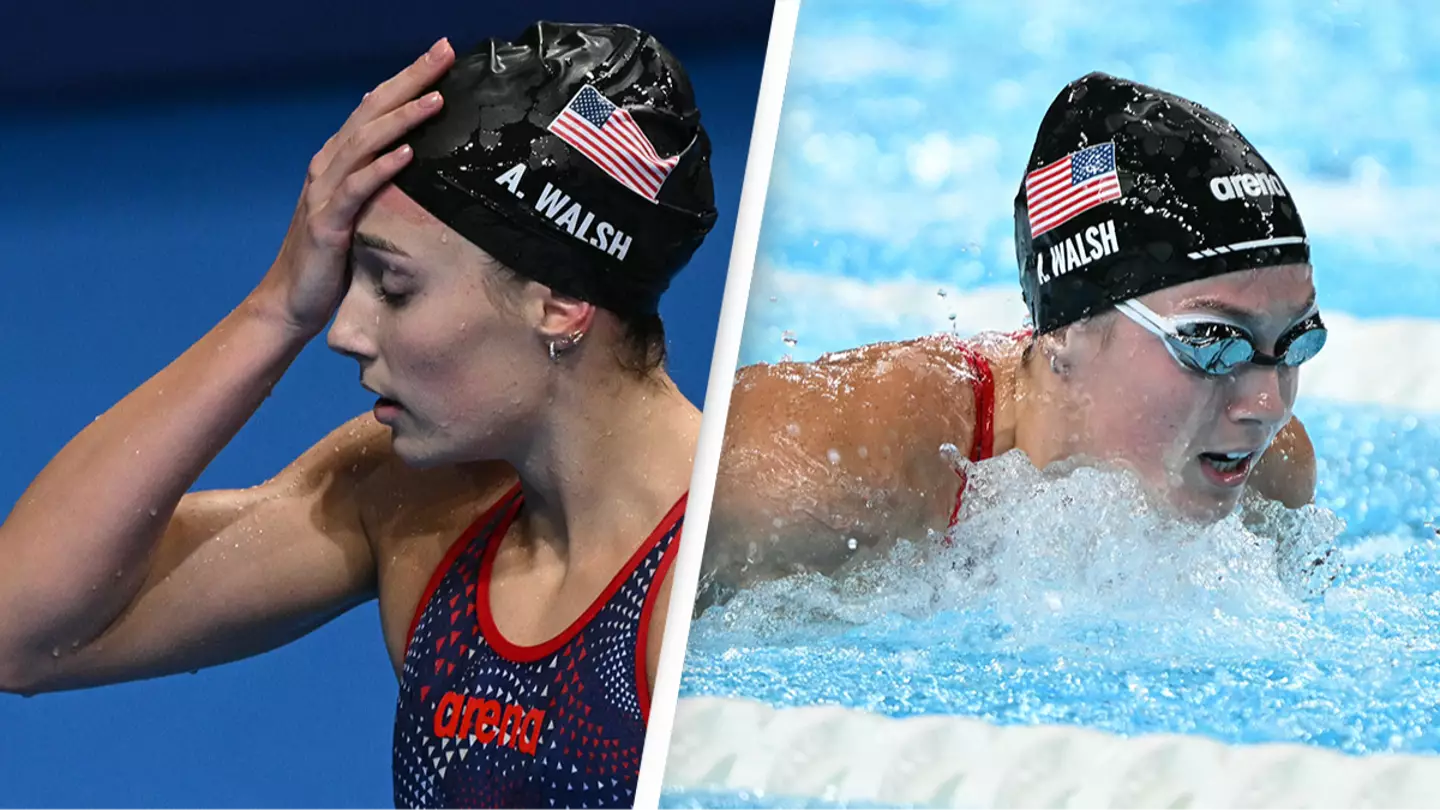
Disqualification of Olympic swimmer explained despite her finishing third in race
US swimmer Alex Walsh fell foul of a particular rule in the 200m medley event at the Paris Olympics
An Olympic athlete who looked set to snag a bronze medal after finishing third ended up being disqualified from her race entirely due to a little-known rule.
At the end of her participation the 200m medley, it seemed that US swimmer Alex Walsh would be going home with a medal.
But instead of the Olympic podium, Walsh ended up disqualified after the race was reviewed by judges, leaving many people baffled.
The medley event is different from other swimming races in that it is not confined to just one stroke.
While breaststroke, backstroke, freestyle (or ‘front crawl’), and butterfly have separate events, the medley sees swimmers using multiple strokes.
There are specific rules about how swimmers make the transition from one stroke to another while in the pool, in part to avoid competitors using a faster stroke more.
But there is one transition in particular which is technically very difficult for swimmers to achieve.
This is the one from the backstroke to the breaststroke, because it involves switching from facing up to facing down in the water.
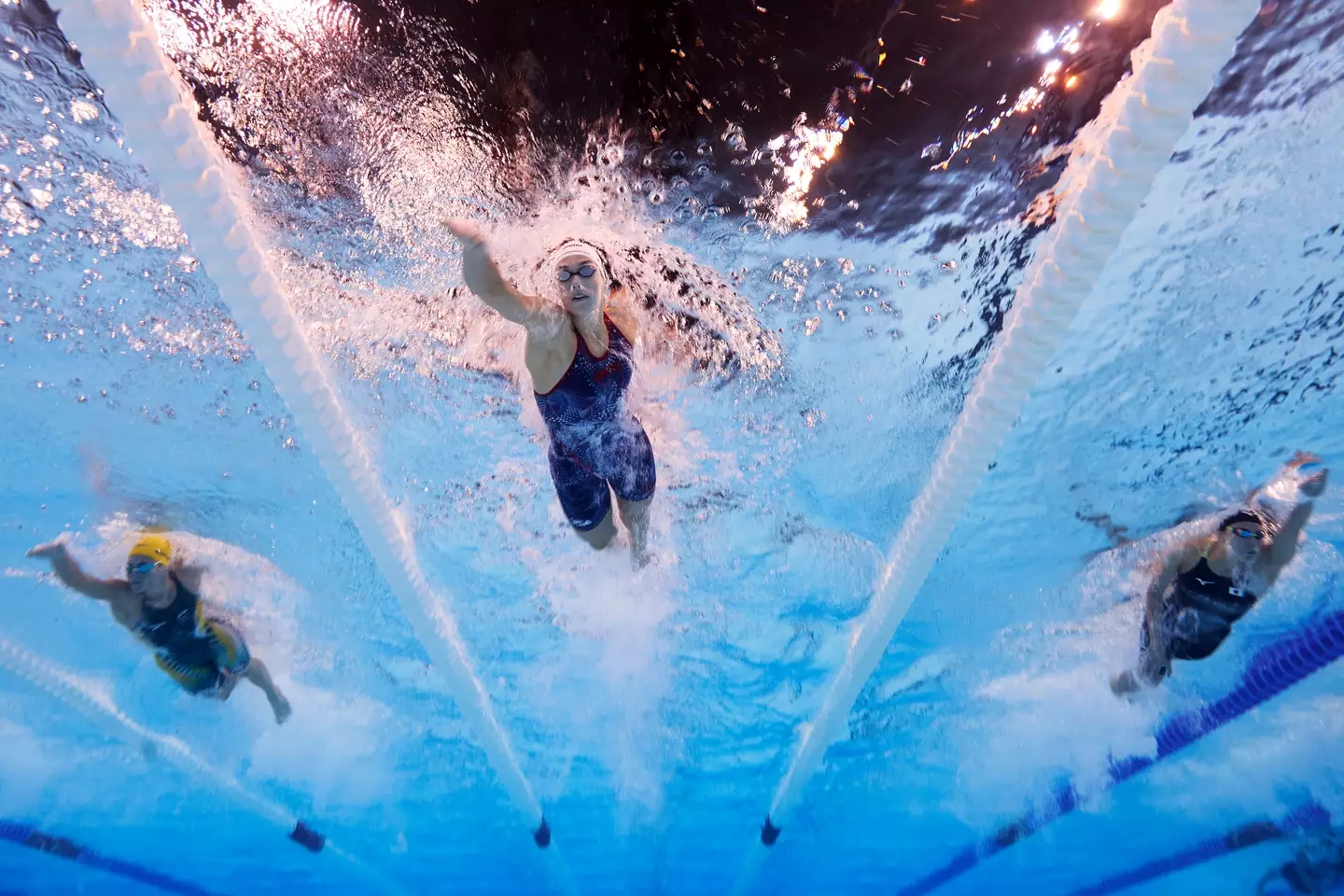
Walsh, centre, competes in the heats for the 200m women’s medley. (Adam Pretty/Getty Images)
Making turns at the end of the pool is also a critical point in a swimming race, as a sloppy or smooth turn could mean the difference between victory and defeat.
So it’s already a particularly high pressure moment in the race even before you factor in the rules around turning in the medley.
And this is where judges found that Walsh had broken the rules, which state that when doing backstroke ‘the swimmer must touch the wall while on the back’.
Unfortunately for US athlete Walsh, when she touched the wall during her race she had already switched over to face downwards in the pool.
This meant that she had broken the rule, and was disqualified as a result.
Swimmers can turn their bodies up to 90 degrees when they make the transition, but any more than that is not allowed.
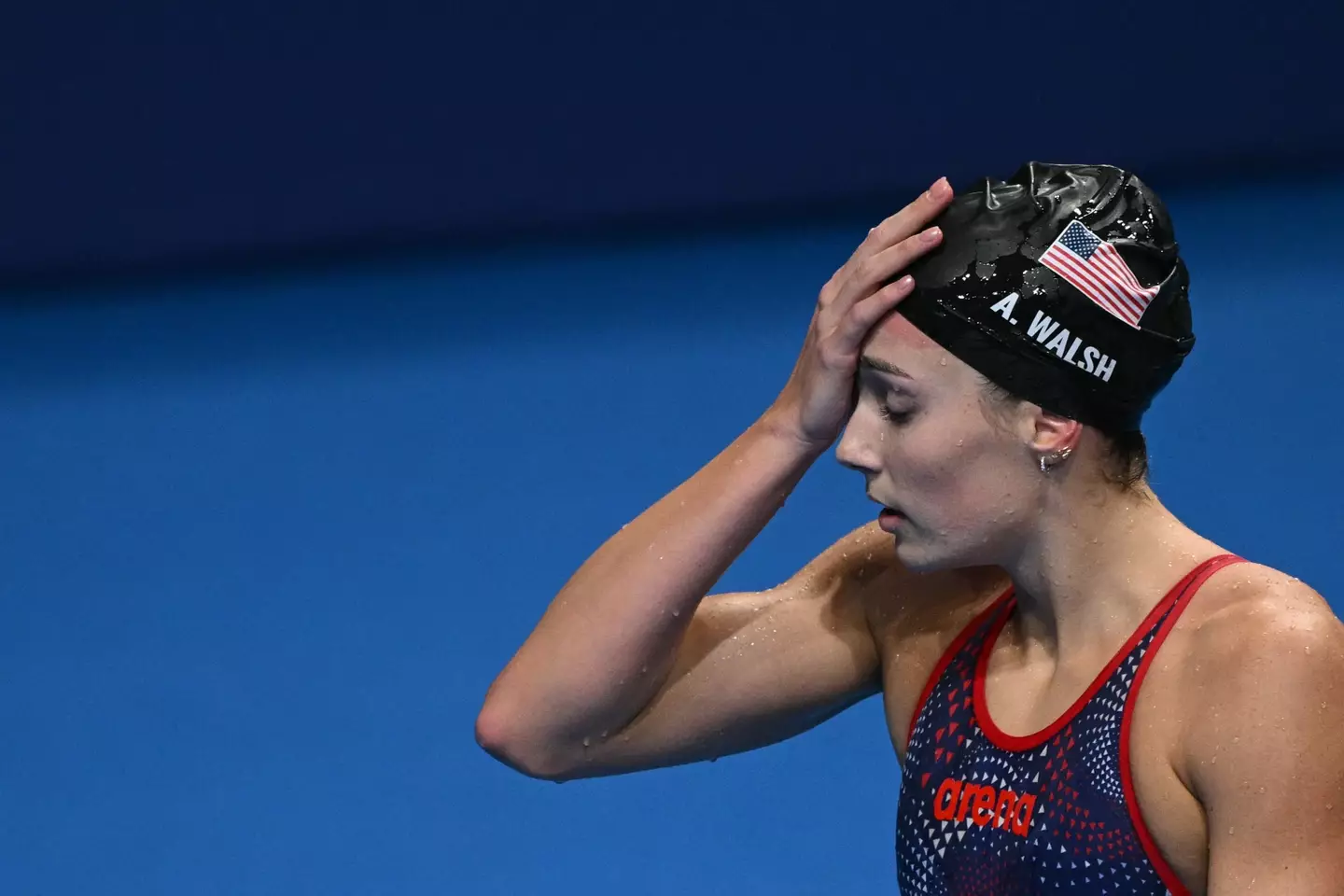
Walsh reacts after the competition. (OLI SCARFF/AFP via Getty Images)
Rules around turning are not the only ones which swimmers have to watch out for during their competitions.
Another rule is about the ‘dolphin kick’ – that undulating motion you see swimmers do immediately after diving in at the start of a race.
Dolphin kick is physically and technically challenging to master, but it is also an exceptionally fast and efficient way to move underwater.
So fast in fact that in most strokes swimmers are only allowed to use it for 15 metres in the pool before they must surface and switch to the main stroke.
They can also only use a limited number of the kicks when making a turn, or potentially face disqualification.
In Paris, team GB swimmer Luke Greenbank was disqualified after breaking this very rule.
Featured Image Credit: OLI SCARFF/JONATHAN NACKSTRAND/AFP/Getty Images

Kit Roberts
.png)
Olympic swimmer collapses after learning he’s disqualified for breaking little-known rule
The Team GB athlete was denied a gold medal after breaking the surprising rule
In a moment that seemed to be straight out of a nightmare, a British swimmer learnt they were disqualified seconds after thinking they had won and secured their spot in the final race.
Even getting to the Olympics is an achievement in itself, but many athletes are rarely happy with this accomplishment unless they secure their place on the podium.
They have to make sure they’re both mentally and physically ready for the mammoth task as one successful moment could change their lives.
British swimmer Luke Greenbank was hoping secure a spot in the semi-finals in the men’s 200m backstroke earlier this week, but it seems this year it just wasn’t meant to be… despite it very almost being so.
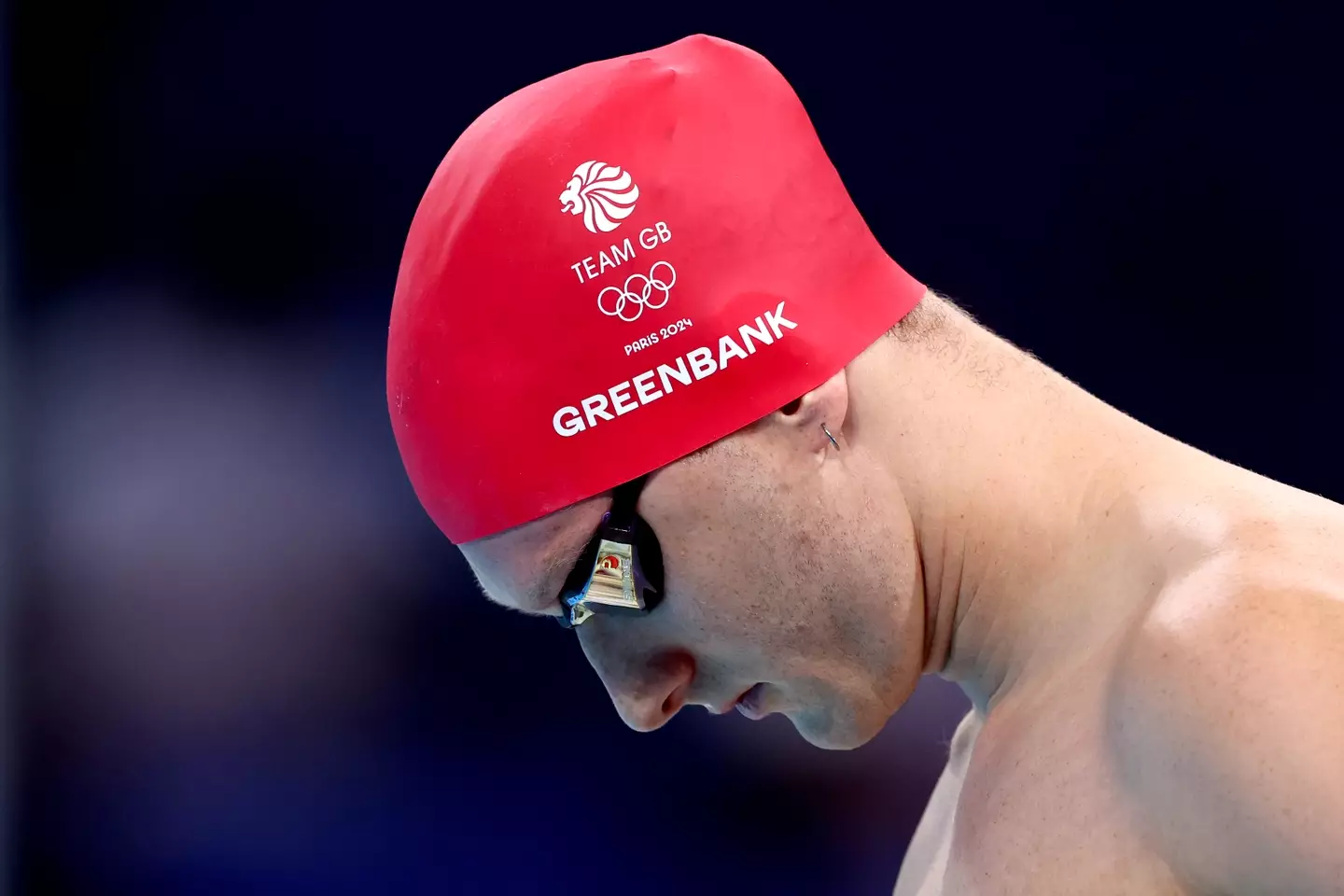
Team GB swimmer Luke Greenbank. (Maddie Meyer/Getty Images)
Despite being a top contender for the event, and even coming first in the heat and beating out his competition by a clear margin, Greenbank was disqualified.
After thinking he’d secured his spot in the semi-final race, the Olympian soon realized what had happened when he looked up at the results board in a crushing moment.
He put his head in his hands and dropped to the floor upon realizing he’d been disqualified, with Australian swimming legend Ian Thorpe saying it was obvious just ‘how devastated’ the athlete was.
Speaking after the decision, Greenbank said: “I don’t know what to say, absolutely gutted. It’s really annoying, I feel like I’m on good form.”
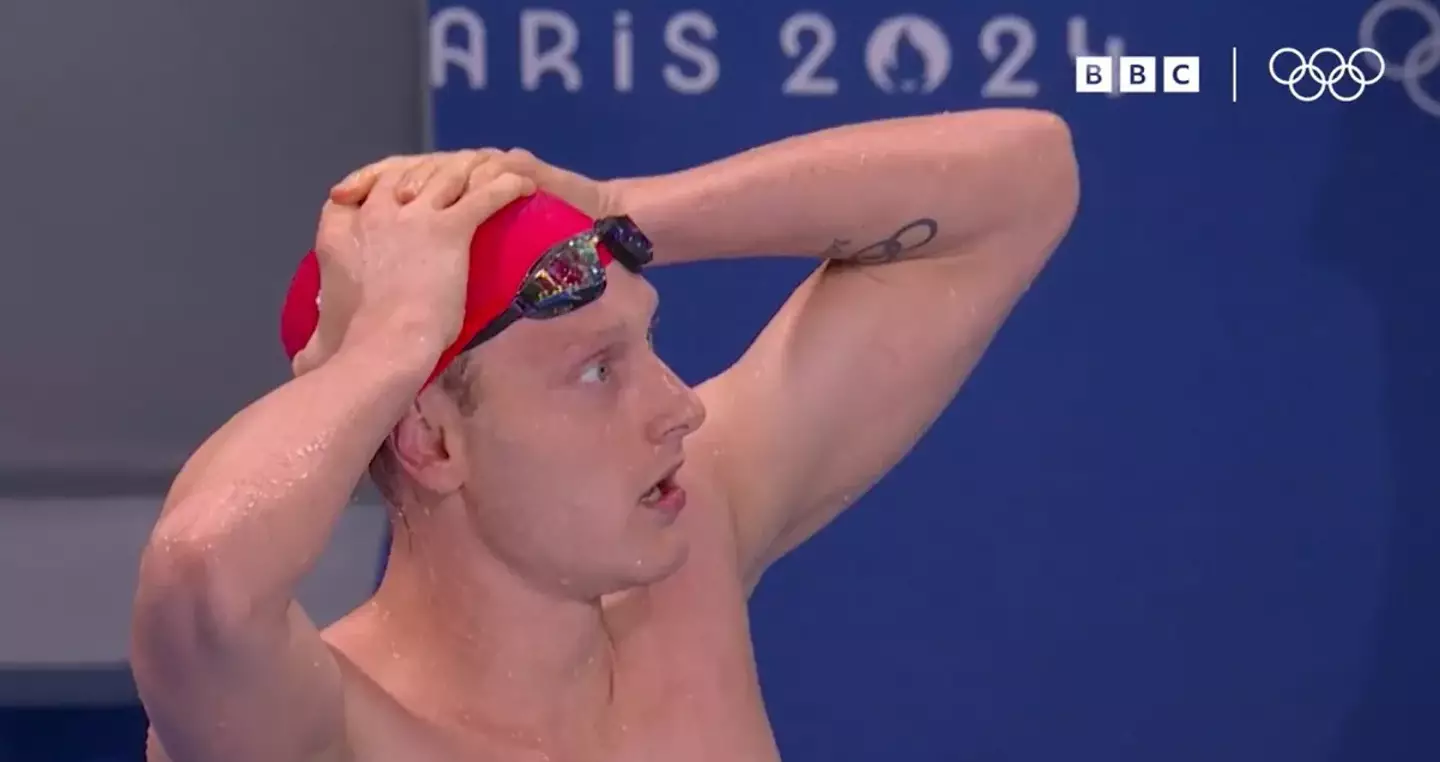
The Team GB swimmer was clearly devastated upon realizing he’d been disqualified. (BBC)
But what rule did Greenbank exactly break?
Footage of the race showed that after the 15-metre mark, Greenbank was still underwater.
A swimmer must break the water and have part of themselves above the surface by the time they reach 15 meters, and they have to do this for each lap they take.
For viewers there is a red marker that makes it clear which athletes have broken the rule.
After seeing himself be disqualified, an instant replay allowed Greenbank to see that he was still underwater by the marker, leaving no grounds for an appeal.
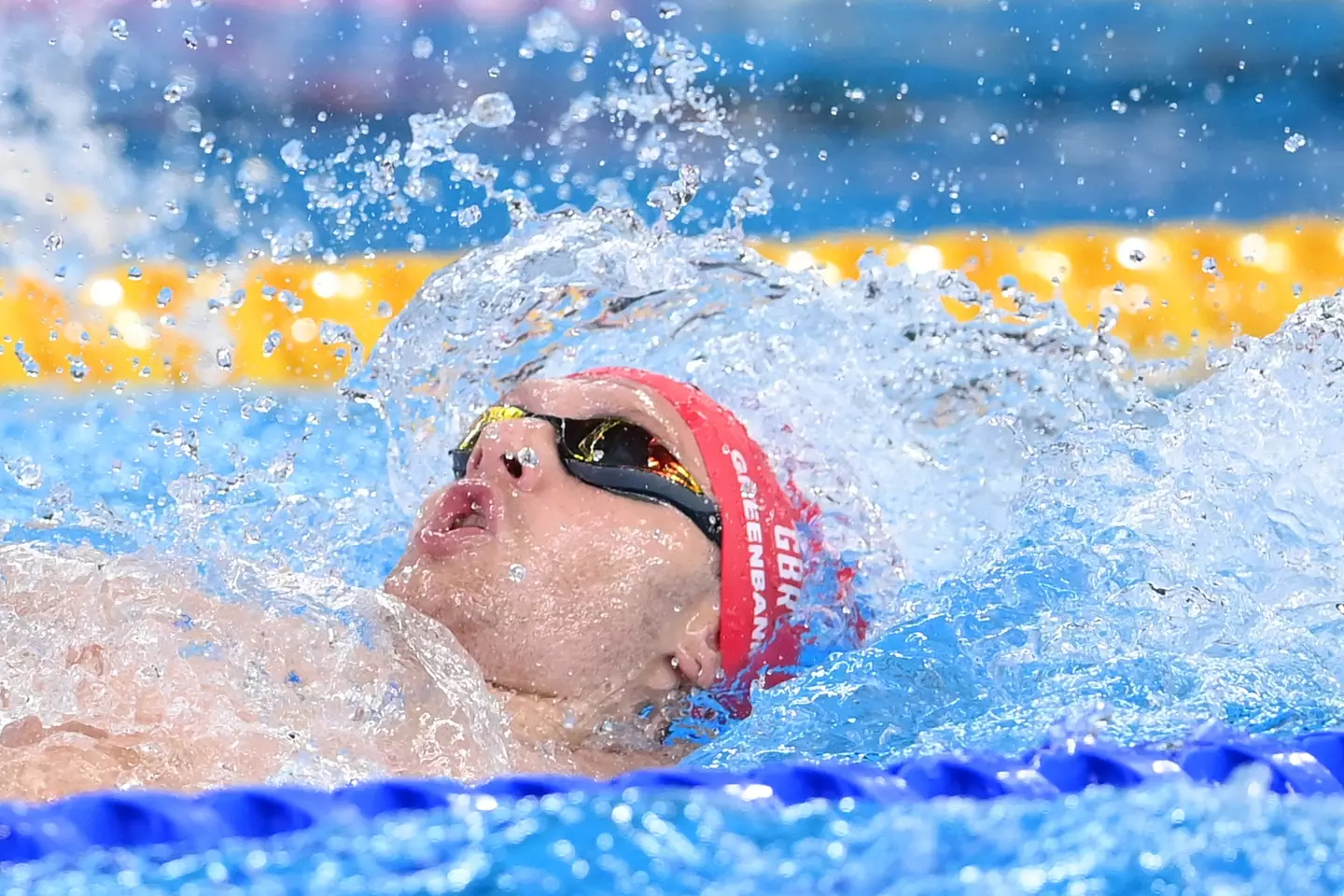
Fans praised Greenbank for his effort, despite the disqualification. (Adam Nurkiewicz/Getty Images)
The 15-meter rule is applied in backstroke, butterfly, and freestyle events but not in breaststroke.
On social media, fans couldn’t help but feel for the world class athlete and this unfortunate turn of events.
“Argh! That’s a nasty hit for us. Feel for Luke. One of the nicest people you would ever wish to meet!” one Twitter user wrote.
“Ugh, watching Luke Greenbank get disqualified in the Olympic semifinals is heart wrenching.”
“Oh no, Luke Greenbank of Great Britain just swam the fastest time of the morning in the 200 back but got DQ’d.
Featured Image Credit: Maddie Meyer/Getty Images / BBC
Gerrard Kaonga
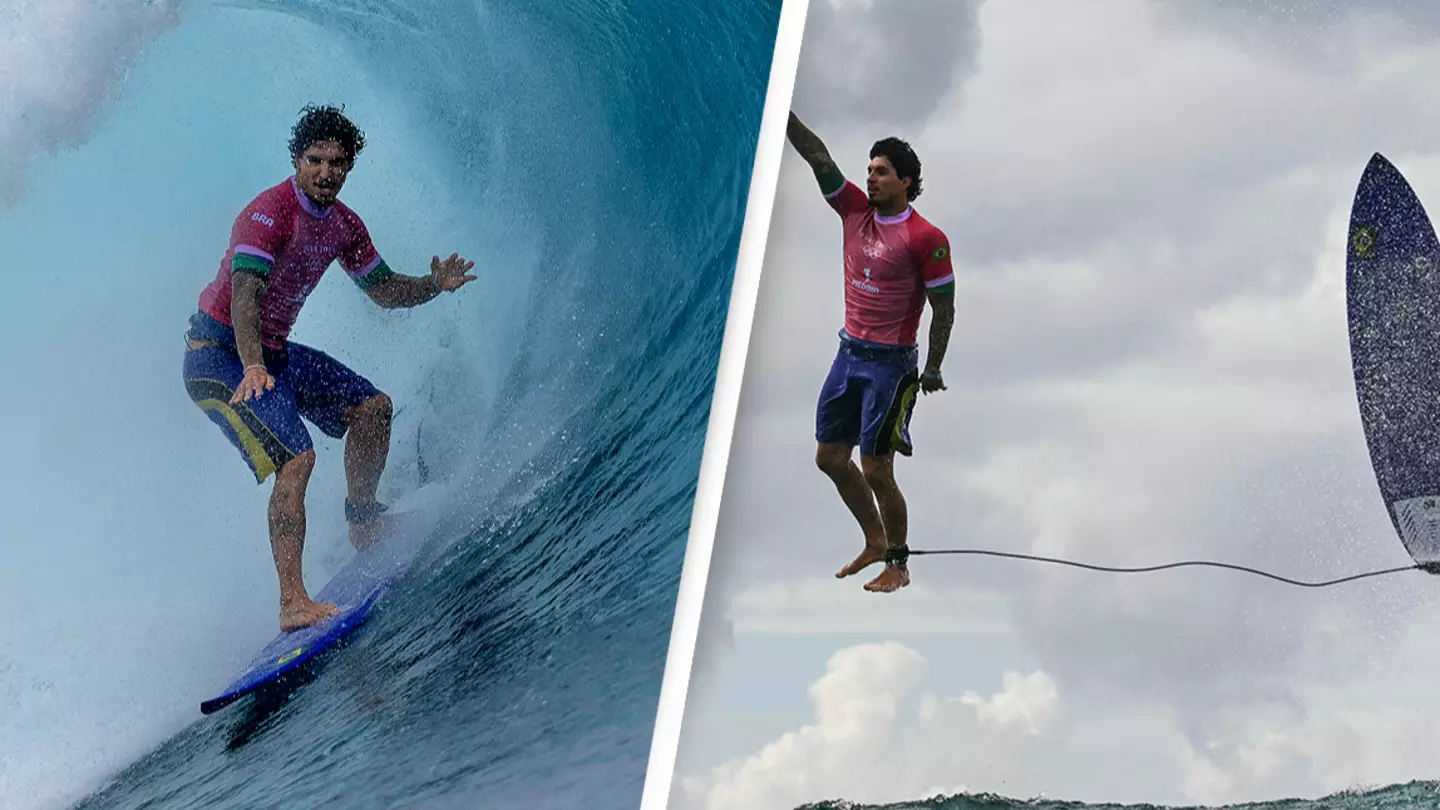
How the incredible photo of floating Olympic surfer was taken
Olympic surfer Gabriel Medina gave us one of the most memorable moments of the Paris games so far
The photographer behind the stunning image of Brazilian surfer Gabriel Medina has revealed how he captured the shot.
It’s a photo which could become one of the defining images of the Paris 2024 Olympics.
Ironically, the image was taken nearly 10,000 miles from where the games were unfolding in Paris on a reef in French Polynesia.
There, the surfing was heating up with competitors taking to the waves to vie for the podium at Teahupo’o in Tahiti on July 29.
It depicts surfer Gabriel Medina from São Sebastião in the Brazilian state of São Paulo.
Three-time world champion Medina is celebrating after catching a huge wave rolling into the beach which sent him flying through the air.
The surfer’s posture is nothing like you might expect for someone flying through the air above the ocean, though.
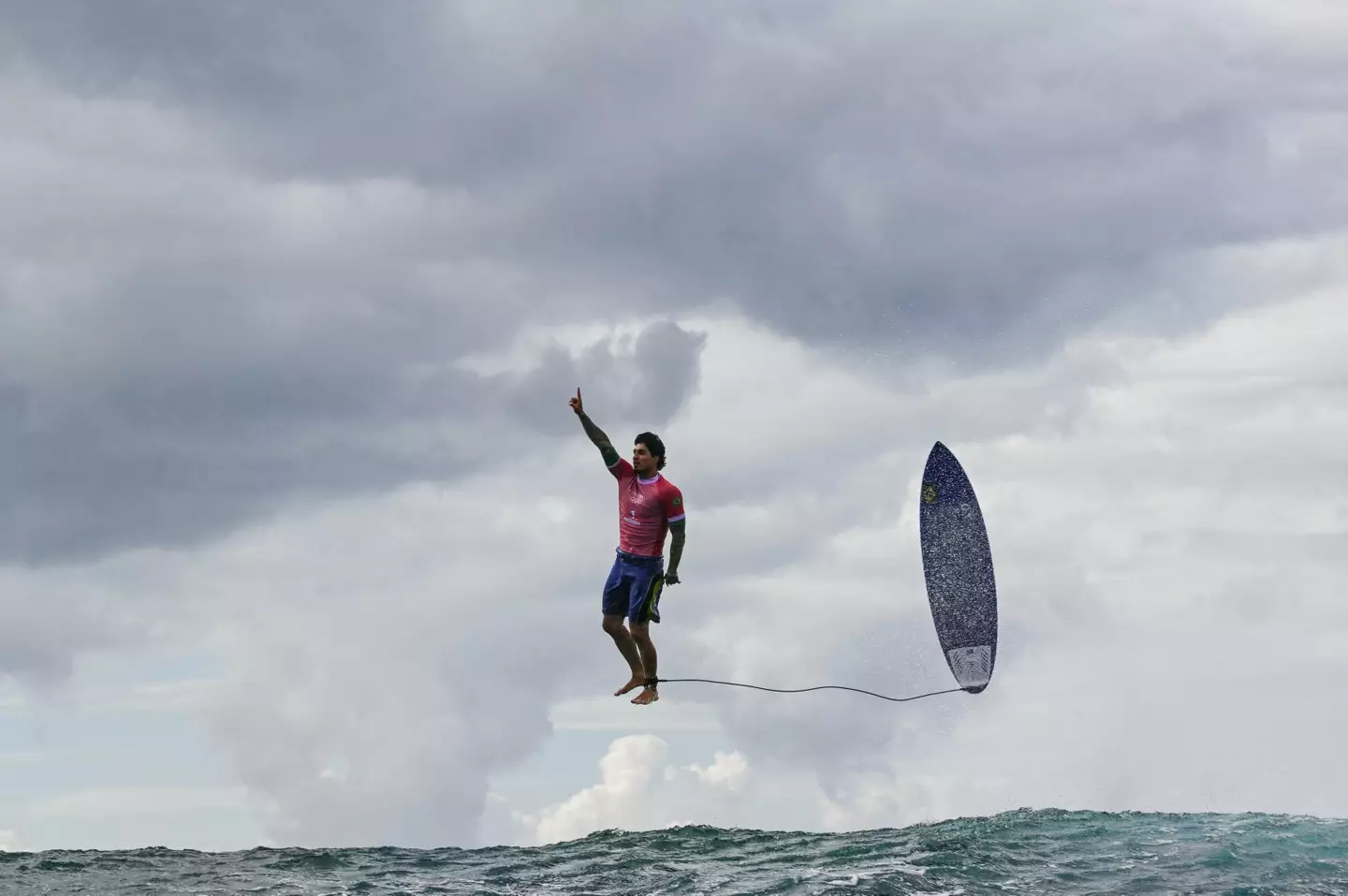
Gabriel Medina celebrates a wave at the 2024 Olympics. (JEROME BROUILLET/AFP via Getty Images)
Instead, Medina almost looks like he is casually strolling down the street and waving to a friend, but suspended in mid-air.
Adding to the peculiar image is his surfboard mimicking his pose while attached to his left ankle by a cord, which runs almost perfectly horizontally.
The picture was snapped by Agence France-Presse photographer Jérôme Brouillet from an observation boat.
And as with many shots like this one it takes a lot of skill, and a bit of luck.
Brouillet told The Guardian: “The conditions were perfect, the waves were taller than we expected.”
He continued: “So he [Medina] is at the back of the wave and I can’t see him and then he pops up and I took four pictures and one of them was this one.
“It was not hard to take the picture. It was more about anticipating the moment and where Gabriel will kick off the wave.”
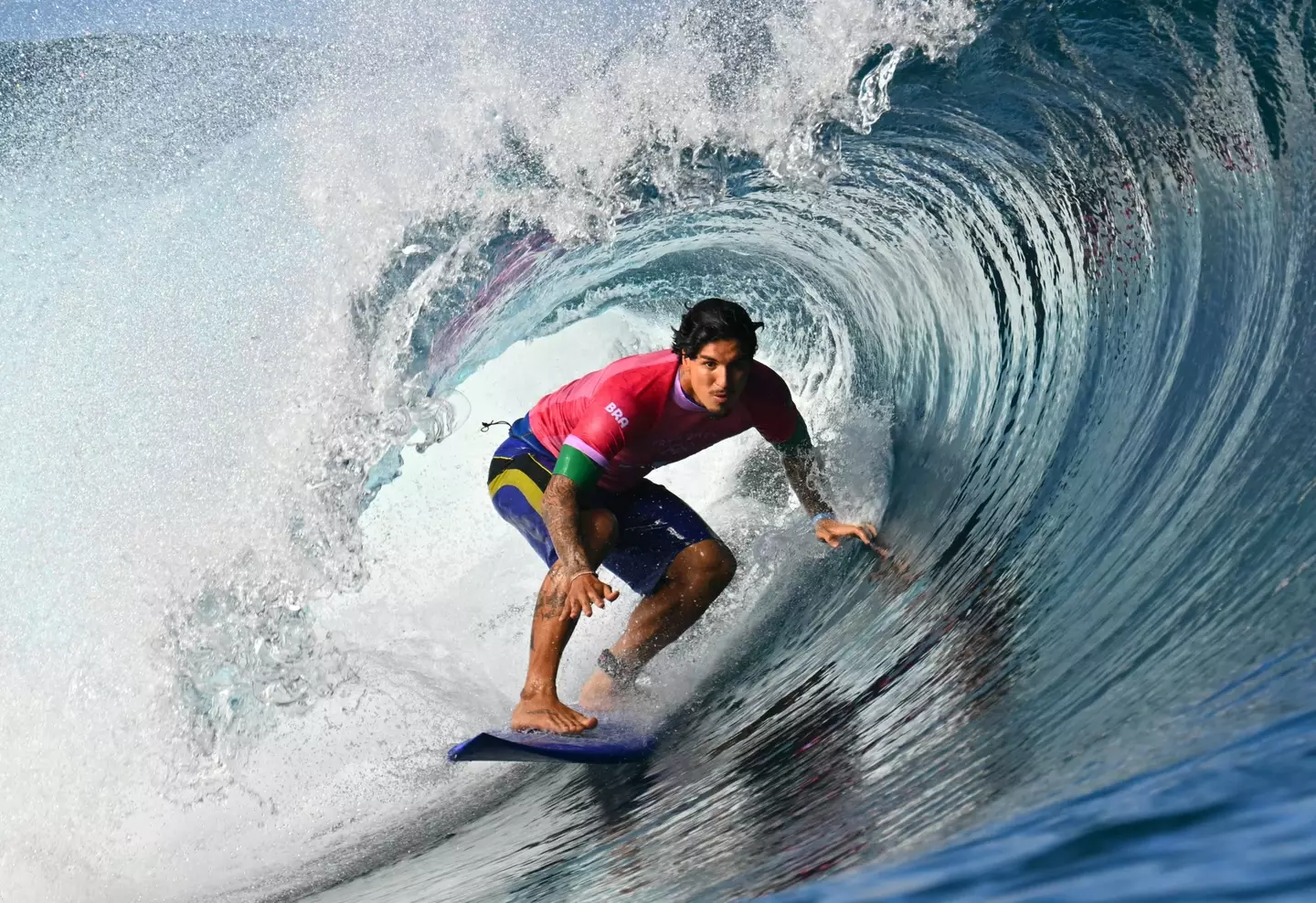
Medina riding a barrel wave at Teahupo’o in Tahiti. (JEROME BROUILLET/AFP via Getty Images)
Brouillet also had the knowledge to anticipate that Medina often does a celebration like that after a big wave.
His camera was beaming his pictures directly to the news desk as he was taking them, giving him a shock when he checked his phone.
He said: “I was just checking my phone on the six-minute break after the shoot and I had lots of notifications on social media and I thought something is happening with this shot and it was shared on ESPN and I thought: ‘cool’.”
But despite that, Brouillet remained modest about his work, saying: “It’s very cool, it’s a nice shot and lots of people love it. It’s not really a surf photograph so it captures the attention of more people.”
He added: “I got the shot of the day, I was with six talented photographers on the boat and for sure everyone will forget about it next week. Tomorrow won’t be any different.”
Featured Image Credit: Ed Sloane/Getty Images/JEROME BROUILLET/AFP via Getty Images
Topics: News, World News, Sport, Olympics

Kit Roberts
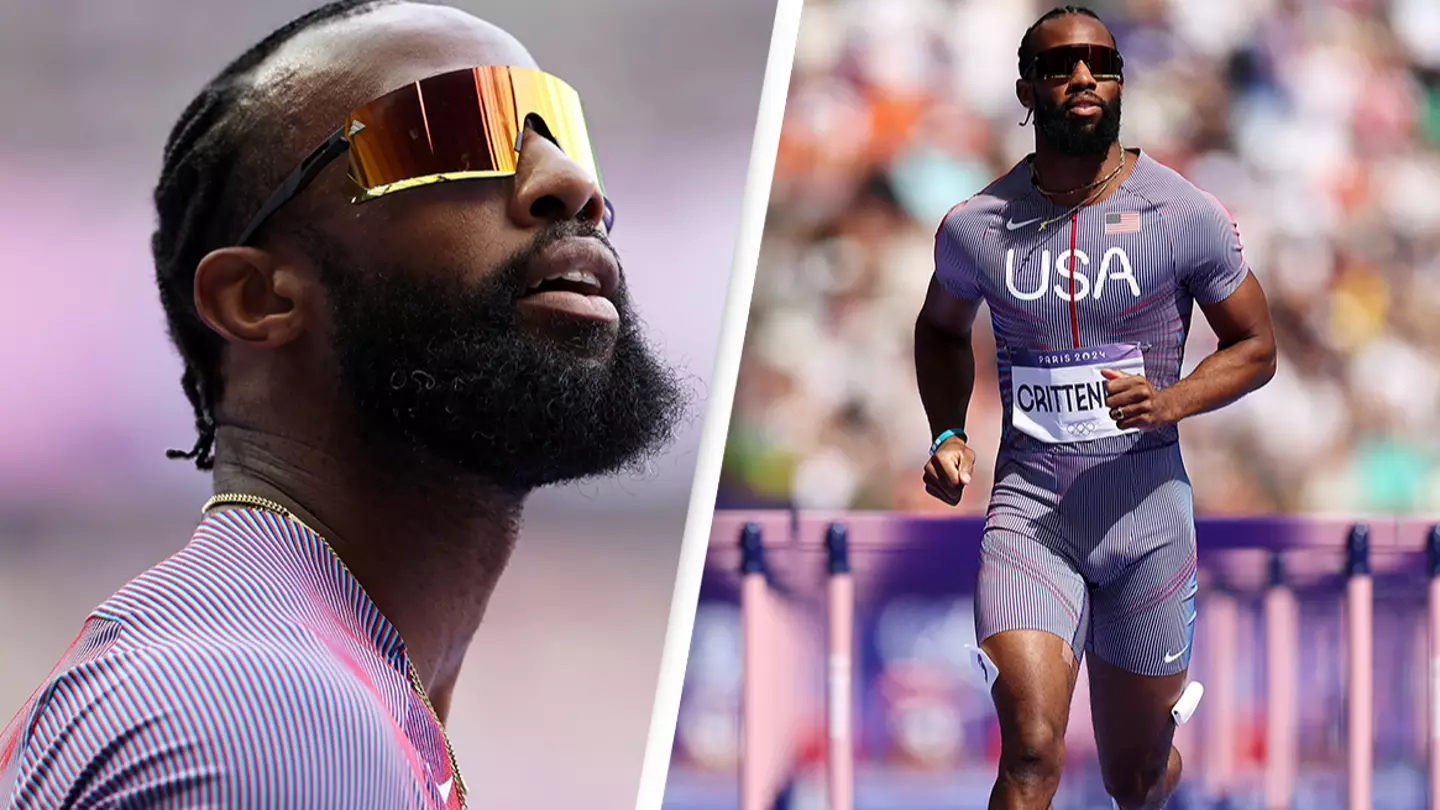
Olympic athlete reveals why he deliberately finished last in 110m race
Freddie Crittenden left viewers shocked with his decision, but it was for good reason
You might think the Olympics is a place where athletes give their all to every single event, but Team USA’s Freddie Crittenden has proven that doesn’t necessarily have to be the case.
Crittenden left viewers stunned on Sunday (August 4) when he appeared to jog down the track of the 110m hurdles race at Paris 2024, causing him to fall way behind his competitors.
The Olympian took his time as he cleared the hurdles and ended up finishing dead last, a full five seconds behind winner Grant Holloway, also from Team USA.
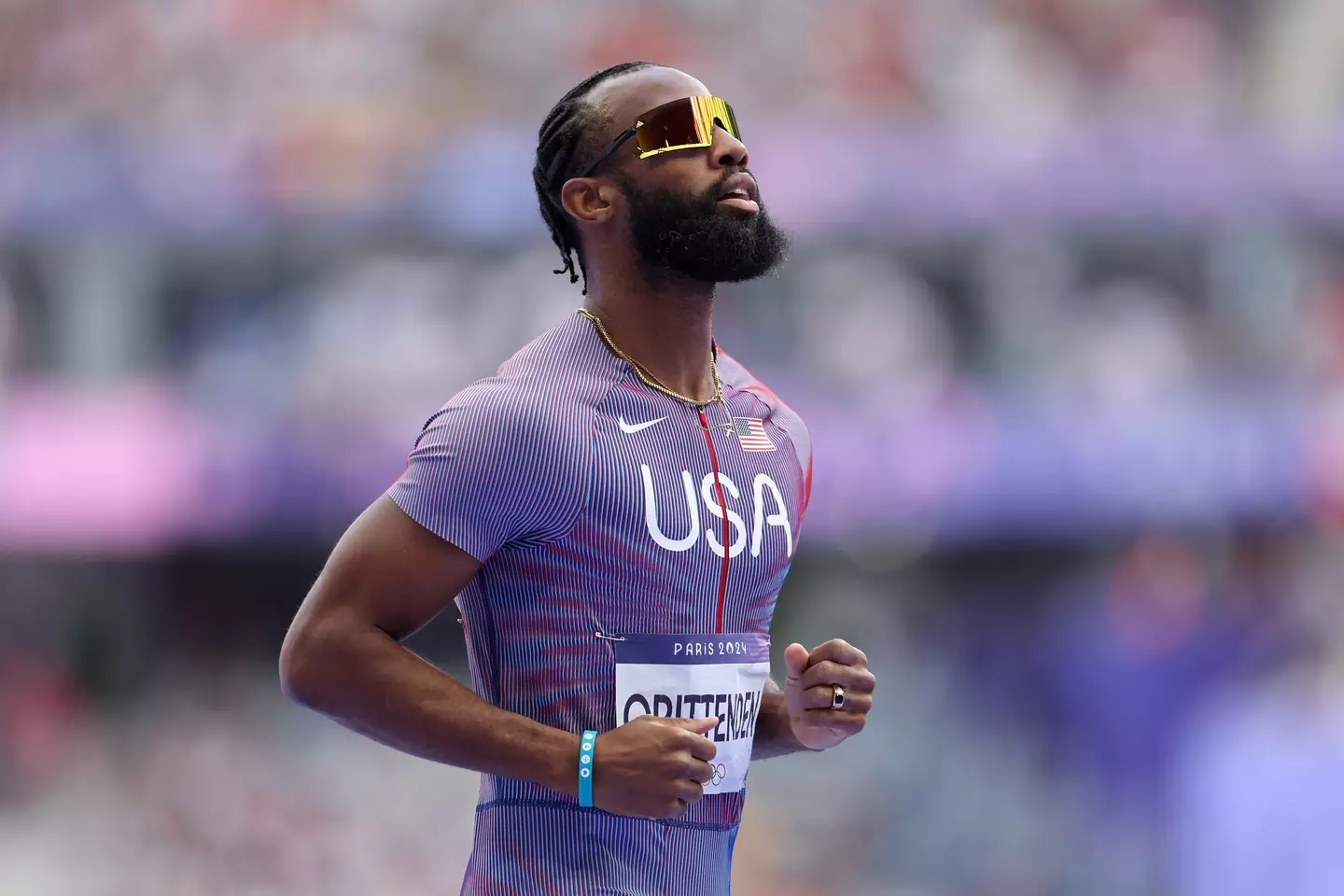
Freddie Crittenden appeared to jog down the track of the 110m hurdles. (Hannah Peters/Getty Images)
Crittenden’s was labeled the second-fastest 110m hurdler in the world this year, his decision to ‘jog’ caused a barrage of questions from viewers.
“What happened there to Freddie Crittenden!?,” one Twitter user asked, as another wrote: “What happened to Crittenden omg ? What was that.”
As it turns out, however, Crittenden’s decision was strategic.
After the race, the athlete said finishing last was an ‘intentional choice’ because he was suffering a small injury.
He might have attempted to push through it if it was the final, but Crittenden knew coming in last in Sunday’s race didn’t mean the end of his time in Paris, because there’s a rule he was able to take advantage of.
While the top three finishers in the hurdles go through to the semi-finals of the Olympics, the remaining athletes who cross the line have a second chance to qualify through what is known as the ‘repechage round’.
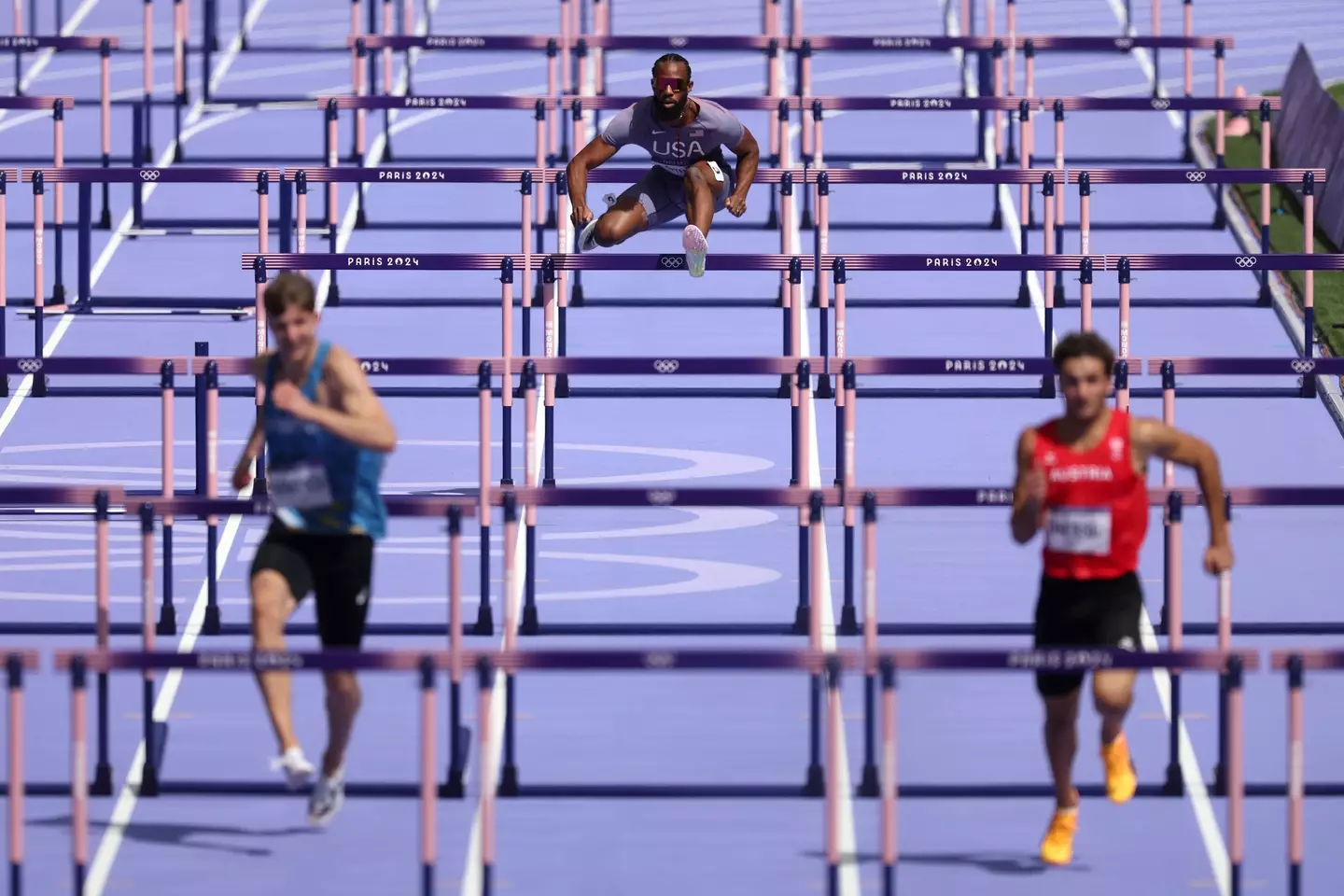
Crittenden finished five seconds behind the winner. (Julian Finney/Getty Images)
Crittenden explained: “It was either get top three or everyone gets through to the repechage. Every athlete has a chance to race in repechage.
“So I decided to just not make an emotional choice, make a smart choice. Give my body time to recover a little bit from being aggravated. Lean on my medical doctors. Lean on God. And just wait for repechage round.
“Come out [here] and try to kill it at the repechage round.”
The repechage round is set to take place on Tuesday (August 6), before the semi-finals take place on Wednesday (August 7).
After taking it slow on Sunday, Crittenden has high hopes for his performance in the upcoming races.
He explained: “I thought I’d come here, take it easy and thank god there was a repechage round, I had to come here, get through the line, I can look forward to the repechage on Tuesday, get top six and make it to the semi-final on the next day.”





